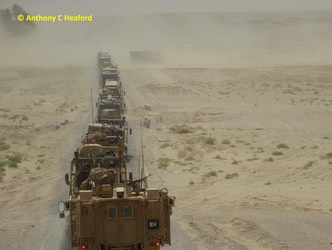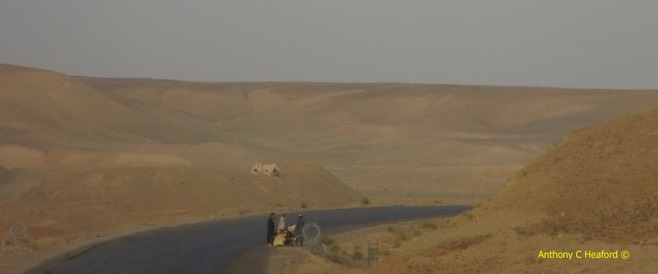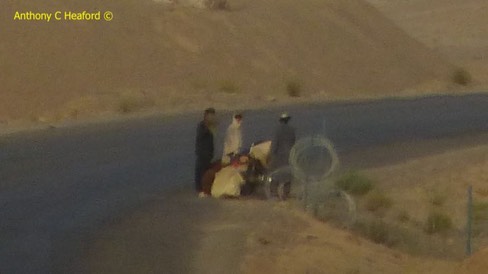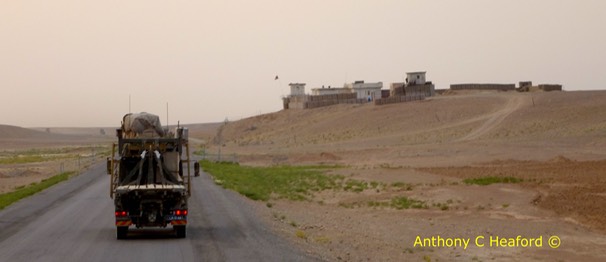- Courtesy of the Afghan National Army
by Anthony C Heaford - 9 March 2019
On Friday 6th July 2012 I was the last British soldier to pass over an enemy emplaced Improvised Explosive Device (IED) before it exploded. We were driving west on Highway-One in Helmand Province, Afghanistan.

Hidden in a drain culvert beneath the road, the IED exploded after we had passed directly over it but before the next vehicle of our Combat Logistic Patrol (CLP) had reached it. No one was injured by the explosion but it did block the Highway and split-up our convoy. We continued back to Camp Bastion whilst the vehicles behind us had to wait for engineers to clear a new route. There will also have been a panic amongst our commanders - if the Taliban had placed an IED there, how did we know there wasn’t another IED in the next culvert?
Responsibility for securing Highway-One lay with the Afghan National Army (ANA). We'd built a series a forts that overlooked the road and we depended upon these ANA outposts to monitor long stretches of vulnerable road.
As reports of the IED explosion were communicated forward the ANA commanders of the forts in front of us will have been instructed to check and secure the culverts before we reached them. This was a very unenviable task for anyone, but especially so for appallingly led, poorly equipped and often unpaid Afghan soldiers. Their solution was very simple - they stopped passing civilian traffic, taking passengers off buses and keys from vehicle's before making those civilians stand besides the culverts until all the NATO vehicles had passed-by safely.


The Afghan National Army put these human shields in place and we, the NATO forces occupying their nation, had no qualms about turning a blind eye and hiding behind them.
I personally saw this happen once, on Friday 6th July 2012; I was shielded by these Afghan civilians, placed between me and a possible IED explosion on a public road.
I've been reliably informed by numerous sources that my experience of being protected by a civilian human shield was not an exceptional event. Although never formally endorsed by NATO it was something that was rarely, if ever, objected to. It was deemed an acceptable if not ideal operating procedure used by the Afghan security forces who we had armed, trained and handed power to when we went home.
Full sized original images:
